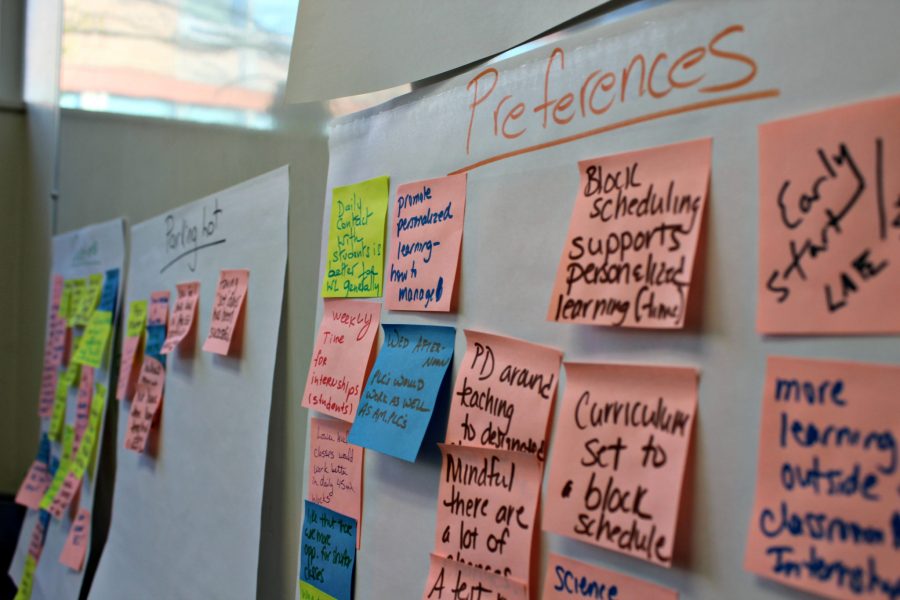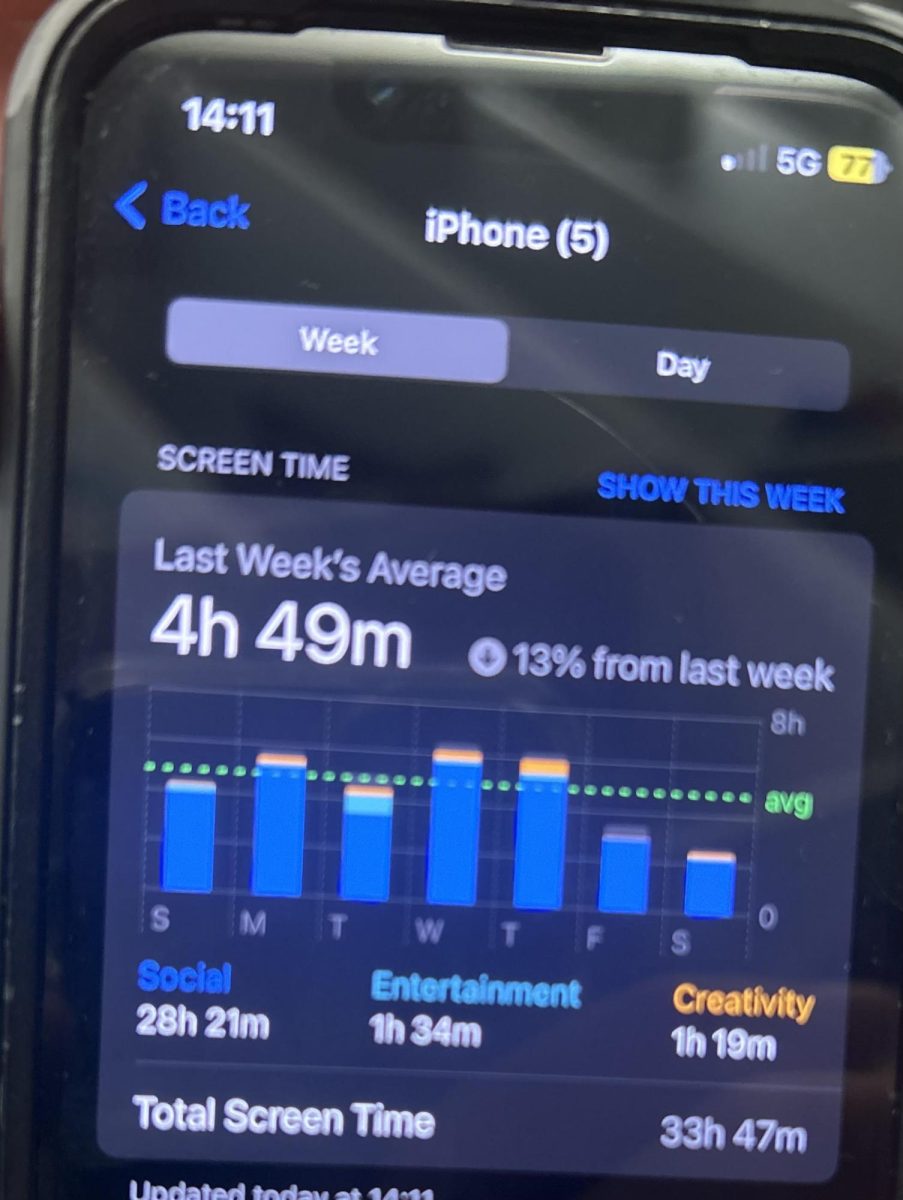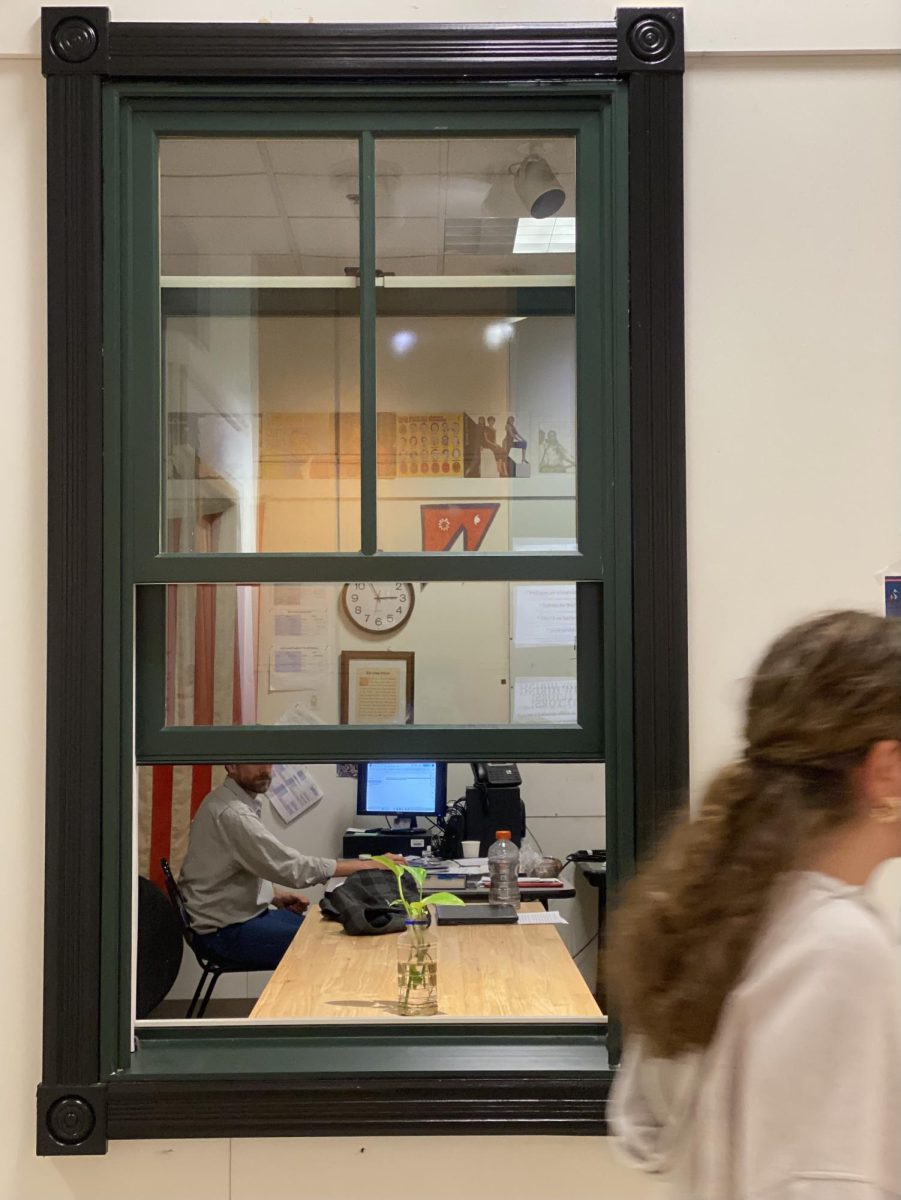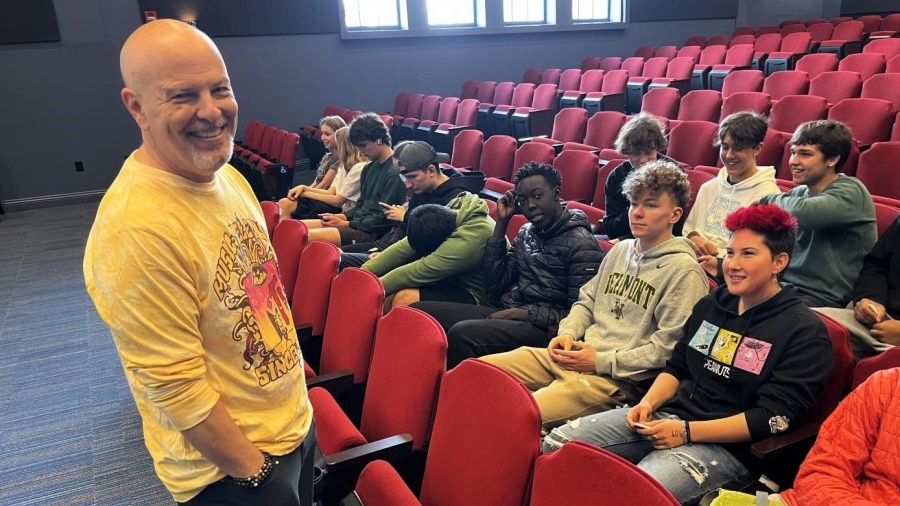After close to two decades of consistency, change is coming to the schedule at Burlington High School. Administration completed their proposal last week, which will soon be finalized for next school year.
BHS Principal Tracy Racicot feels the change is driven by an effort to allow for flexible pathways to learning, which became mandated by the state in 2013. Flexible pathways include opportunities such as college courses, tech center programs and internships.
The current model, which began in the 1998-99 school year, is an alternating block schedule, where students take four 90 minute classes one day, and an additional four the following day. The high school previously operated under a form of block scheduling in the 1960s and early 1970s, according to an historical article in the 2011 BHS alumni directory.
Key changes for the schedule include class periods of varying length. Teachers have been asked to identify what courses they believe would be best suited for classes of approximately 45 or 85 minutes in duration.
The switch comes as a result of information gathered through research and lead teacher meetings, according to Racicot. Faculty members and research have pointed to the theory that certain subjects, like math and foreign languages, are taught better in shorter, more frequent time periods.
All 45 minute courses will meet on a daily basis, with 85 minute courses alternating on a blue and white day schedule. Blue days will be every Monday and Wednesday, with white days on Tuesday and Thursday. Students will have limited opportunities to take a full eight courses, as one of the periods will be volunteer-only and meet at 7:15 a.m.
Martine Gulick, a longtime BHS parent and the library director at Essex High School, favors less free time and more courses in the schedule.
“Although study halls can be useful, they’re often a waste of time,” she said. “We said to our kids early on: ‘you’re going to fill your schedule.’”
Changing Start and End Times
Wednesday late start times will be gone next year, with professional development time for teachers being shifted to Friday afternoons.
“What we’ve found with talking with teachers and students is that people don’t know what time their classes start,” Racicot said. “Starting school at the same time each day helps build a routine.”
Sleep deprivation is a chronic health problem among adolescents in the United States. Experts have determined adolescents need 8-10 hours of sleep each night, however most students will agree they don’t get close to that amount. After all, less than one third of high school students sleep 8 hours per night, according to the Centers for Disease Control (CDC).
Nationwide the average high school start time is 8:03, while the American Academy of Pediatrics recommends high schools should start no earlier than 8:30 am.
Insufficient sleep during one’s high school years has been linked to long term health problems. The CDC confirms that sleep lacking adolescents are more likely to be overweight, engage in smoking, drinking, drugs, and illicit activities.
Conflicts with sports and extracurricular activities made pushing back the start time tricky.
The extra potential sleep time of Wednesday late starts will be shifted into Friday, where administration has proposed the creation of a weekly half day, while teachers meet.
Teachers requested the Friday time slot, as they felt it would be a good time to regroup at the end of the week and set up for Monday, according to Racicot. The transition to personalized learning plans and proficiency-based learning has prompted the need for more professional development time, which will be granted under the new model. Fridays will consist of eight, 35 minute classes.
Parent Caroline Crawford is concerned that the proposed schedule does not meet the needs of adolescents.
“It would make much more sense to have students sleep in and start later,” she said.
Crawford believes having an early dismissal each week will create the impression for students that one day of school is less important than the others.
Racicot doesn’t believe this will be the case.
“I think that’s something teachers will address through their classes,” she said. “Some will give students quizzes, and some will prepare them for the next week.”

The early dismissal model raises several concerns for Gulick.
“I worry about the vulnerable populations, I feel like that time needs to be structured,” she said. “I think if you’re going to institute some sort of early dismissal model you need to have a lot of after school offerings.”
Racicot has initiated the creation of afterschool activities for students on Friday afternoon. She believes the time period will develop into robust student work on personalized learning plans after at least a couple years of development.
“My dream is on Friday kids will have meaningful opportunities, mentorships and internships,” she said.
Gayle Botelho, the district’s personalized learn plan coordinator, sees strong potential for the Friday time slot.
“I believe observations and internships will expose students to skills and interests that are important while making decisions about life after high school,” she said. “If planned well, this is a fantastic opportunity for students and teachers. There is a lot of potential to have students demonstrate growth and knowledge on our Graduate Expectations in an amazing way.”
The schedule also includes some courses starting as early as 7:15 a.m. as part of a 45 minute, “module 0” time slot to start the day. This will allow students the opportunity to take two courses at the high school before going to a tech center program.
The school day will also be getting a new end time: 2:40 p.m. Racicot explained that this does not reduce teacher contact with students, and was created by shifting teacher preparation time. She hopes to eventually offer study halls that run right after school, as athletics will still begin at 3:30 p.m.
Flexible Learning Opportunities
The shake-up also includes a 45 minute “flex time” in the middle of the school day, where students can see teachers, or student clubs could meet. Activities with paid, faculty advisers would create issues under the current teacher contract, which is being renegotiated this spring.
“We assured that the BEA has been included in all of the notes, meeting minutes and communications,” Racicot said.
Signe Daly, the parent of a freshman, is pleased that the high school is willing to make changes.
“There has to be much more of a drastic shift sooner than later for us to do [personalized learning plans] well,” she said. “You really have to be much more flexible. You can’t be so rigid.”
The BHS advisory program, which serves as a way for students to work on personalized learning plans and receive academic guidance, will be reduced to just two days per week. Students requested more time available to see teachers and focus on studies.
Advisory Program Coordinator Nadya Bech-Conger thinks students and teachers will appreciate structured access to teachers during the day.
| “The proposed schedule for next year protects time for the robust advisory program we have built over the last two years, including ongoing relationship and community-building, Community Meeting, [personalized learning plans] and post-high school planning work, wrote Bech-Conger in an email to the Register. |
In response primarily to student feedback, lunches will be a little bit longer for the 2017-18 school year, expanding from 25 to 30 minutes. The addition of a fourth lunch period will also help to alleviate long lines and a crowded cafeteria, Racicot said.
Dual Enrollment
Katie Mobley serves as the executive director for the Community College of Vermont’s Winooski, St. Albans and Middlebury locations. She feels that taking advantage of dual enrollment, a state program that offers free colleges classes, can be a challenge for some students.
“I would say that having a more flexible schedule—like an early release day on a Friday or another day of the week—could lead to more opportunities for BHS students to take advantage of the flexible pathways opportunities in our community,” Mobley wrote in an email.
Transportation is one of the primary issues restricting students from taking classes at CCV. Bus transit includes a change at the Cherry St. terminal, resulting in a ride of close to an hour from the high school to Winooski.
The college also runs classes from 6 to 8 p.m., but some students find this too late, according to Mobley.
Partnering with the Burlington Technical Center
One of the primary goals of the schedule redesign was to allow for Burlington Technical Center to align with the high school.
The center’s current schedule has two class blocks, one in the morning and one in the afternoon, with each lasting a little more than two hours in duration. While enrollment data shows that over 50 percent of tech center students come from Burlington, the high school is the only area institution whose schedule does not align.
Adam Provost, the tech center’s director, believes the changes will help increase enrollment.
“It opens up a tremendous amount of opportunity for students,” he said.
Provost believes the redesign work is worth the time and commitment, and hopes to see constant tweaking in the future.
“One of the biggest challenges in education is to admit that you can change the master schedule,” he said.

Communication Issues
Crawford, who works as a higher education communications professional, thinks that the transmission of information has been poor. With a daughter entering high school next year, the updates she has received have left her concerned.
“I fully believe in public schools, and I’d be really sorry if I didn’t send my kids there,” she said.
Gulick is also strongly disappointed with the administration’s communication efforts.
“I still feel like I’m kind of in the dark,” she said. “I’d like to see some better communication.”
The parent also feels that the BHS website is in need of a major redesign, to ease access to information and communication.
“If I was a parent trying to move to Burlington, and I saw the [school] webpage, I would have decided not to move here,” she said.
Waiting to be Finalized
While next school year’s proposal is almost ready, it has yet to be completely finalized, according to Racicot. The key concepts plan to remain, but technical limitations of the Powerschool student management software could prompt minor changes. This could include altering start and end times, and specific class lengths. She said administration plans to have the schedule finalized before summer vacation.
Racicot recognized that the switch is a large change for the high school community.
“It’s a huge challenge and it’s very daring to make such changes,” she said.





















Kolby LaMarche • Feb 11, 2017 at 10:35 pm
I am appalled that our student representatives have not taken immediate action on reaching out to students who feel this change will be harmful to them. However, if, for some reason, the representatives have not seen the outrage by students, here’s the message, please take swift action to support the students you represent, reach out and let their voice be echoed.